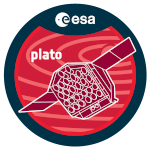When stars evolve towards red giants, their structures experience significant changes that are not easily visible in classical observations, such as the stellar temperature and luminosity. On the other hand, period spacings, probing directly the stellar cores, provide an effective way to distinguish between red-giant branch (RGB) and core helium-burning stars. Nevertheless, their observation is not always possible, becoming particularly difficult in luminous RGB stars.
In this work we seek to find an alternative way to establish the evolutionary stage of stars crossing the read-giant phase. Based on stellar models, we argue that such an alternative is provided by a particular combination of the ratios of small to large frequency separations.
|
|
|
|
Probing the evolutionary status of red giants with ratios
1 : Institute of Astrophysics and Space Sciences
2 : Laboratoire Univers et Particules de Montpellier
Centre National de la Recherche Scientifique, Université de Montpellier
|

 PDF version
PDF version
